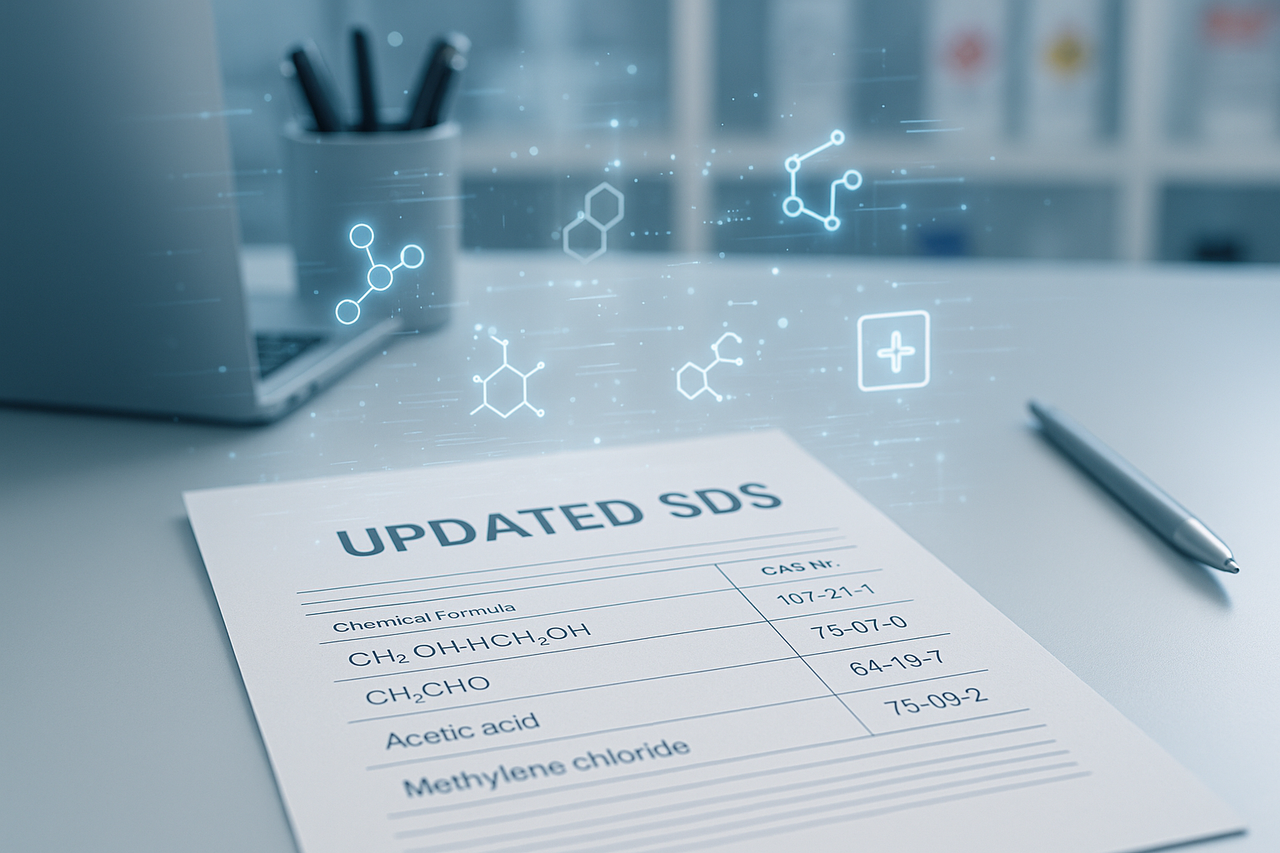
Because “better safe than sorry” should apply across every industry
In the chemical industry, the principle of “better safe than sorry” is already deeply embedded.
Processes are controlled, substances are tracked, and every container comes with its Safety Data Sheet close at hand.
But once those same products move downstream, to maintenance teams, construction sites, or industrial service providers, that mindset often fades.
Not out of negligence, but because safety data management feels distant from day-to-day operations.
Yet these teams are often the ones working closest to hazardous products.
And that is why keeping recent and accurate SDSs available is not just a formality, it is the cornerstone of safe work, even outside the chemical plant.
A Safety Data Sheet is not just a regulatory document, it is your window into the real hazards of the substances your people work with.
When it is outdated, it hides new science, and with it, new risks.
An SDS issued three or four years ago might still list an ingredient as “not classified” for health hazards.
But after updated testing, the same ingredient could now be a suspected carcinogen or reproductive toxicant, or newly recognized as a PMT/vPvM substance under CLP.
Without an up-to-date SDS, your entire risk assessment can rest on outdated assumptions.
The key to understanding this lies in Section 3 of the SDS: Composition and information on ingredients.
This section lists:
It is the foundation of any chemical risk assessment.
From Section 3, everything else follows, exposure control, toxicological evaluation, labeling, and emergency measures.
When the data in Section 3 is outdated, every other section is built on shaky ground.
That is why modern compliance starts with accurate component data.
When ECHA identifies new evidence that a substance is more harmful than expected, it often issues harmonized classification updates or Candidate List entries under REACH.
But translating that science into updated SDSs takes time:
By the time that happens, a year or more can easily pass.
That is why proactive tracking is so valuable, it lets you spot risk shifts before the paper trail catches up.
A clear example is the introduction of new hazard classes in 2023.
In March 2023, the EU updated the CLP Regulation through Delegated Regulation (EU) 2023/707, adding new classifications such as PMT (Persistent, Mobile, Toxic) and vPvM (Very Persistent, Very Mobile), as well as endocrine disruptor categories.
Any SDS issued before this date will not include these new hazard classes.
So even a Safety Data Sheet from 2022 or early 2023 might look current, but it actually lacks crucial environmental and health hazard information that has since become mandatory.
Yes, keeping SDSs up to date is an administrative burden.
Especially when you manage hundreds or thousands of chemical products, each with dozens of components.
But platforms like NextSDS change that equation.
By automatically extracting Section 3 composition data, mapping each substance to our curated CAS database, and checking it against the latest ECHA classifications and restrictions, we make proactive compliance possible.
That means you can:
It is not about punishing companies, it is about protecting people, making sure every worker handles substances based on the most recent scientific understanding.
The purpose of chemical compliance is sometimes lost in the paperwork.
It is not about avoiding fines or ticking boxes, it is about keeping colleagues safe, ensuring they can do their work without long-term harm.
When you look at it that way, keeping your SDSs recent is not bureaucracy, it is basic responsibility.
Because in chemistry, as in life, it is always better to be safe than sorry.
At NextSDS, we help companies turn reactive document management into living chemical intelligence.
Our platform:
With proactive insight, SHEQ managers can focus less on chasing paperwork and more on protecting people.
✅ The science keeps moving. Your SDS should too.
And with the right tools, staying ahead does not have to be hard, it just has to be intentional.
👉 Discover how NextSDS can help you keep your SDS data current and your workplace safer. Learn more.